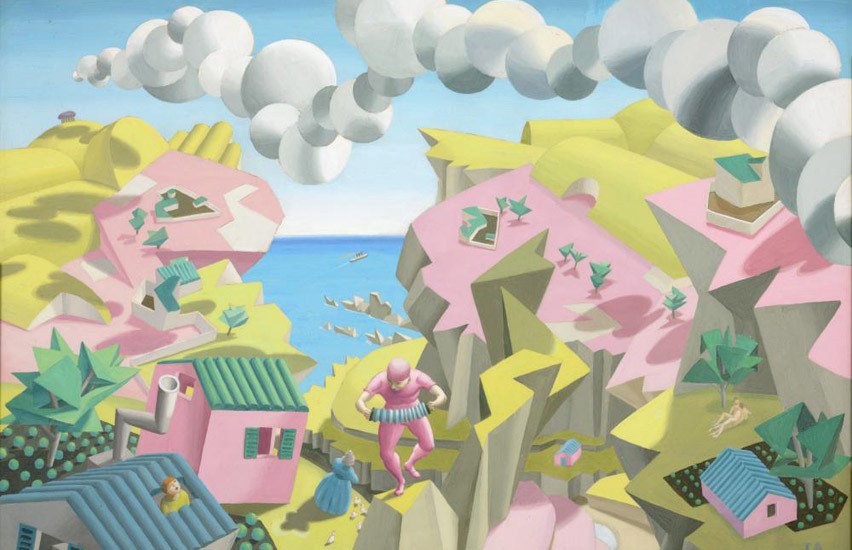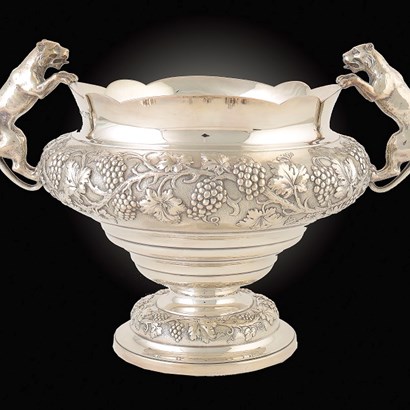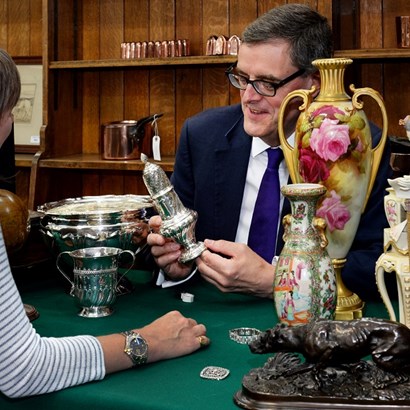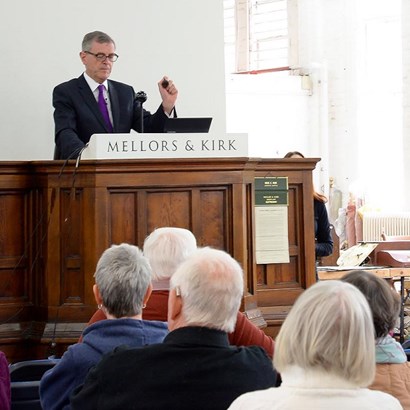Auction Insights
John Armstrong - Landscape With Figures

A painter who to me seems almost an old friend has a strong claim to be the major 20th century English artist no-one has heard of.
Whilst that is an exaggeration, John Armstrong (1893-1973) was a highly original modern painter and designer whose work deserves to be much better known, such as that of Stanley Spencer or Lucien Freud.
It is inspired and invariably meticulous in execution. He was also for a time that rare bird, a surrealist in a gentle, distinctly English idiom.
Interest in Armstrong is, at last, reawakening with recent exhibitions and the publication of the Catalogue Raisonné which reveals the sheer quality, breadth and strange beauty of his art.
Armstrong’s ‘Landscape with Figures’ (alternative title ‘Daphnis and Chloe’) will go under the hammer at Mellors & Kirk next month. The estimate is £10,000-15,000, which is in line with the prices realised by others, but this picture is not only one of his earliest, dating from 1927, but also ranks amongst his most important. It has never before been seen at auction and only rarely exhibited in public.
The picture was originally bought by Maurice Chesterton, a cousin of the author G K Chesterton, when it was exhibited in London in 1928. Nearly 50 years later, when it was shown at the Royal Academy shortly after Armstrong’s death it was described as “A picture which… perfectly expresses the spirit of Art Deco”.
The picture’s alternative title was a mildly erotic subject from Greek mythology and a favourite of artists from the renaissance onwards. The naive young lovers Daphnis and Chloe were raised together on the island of Lesbos since they were new-borns and after an eventful series of misadventures married and lived happily ever after.
The picture is full of such little scenes – although none follow the plot –which should be seen as lyrical vignettes, interconnected, as in a play. Each after each seems to reveal itself, from the little concertina player jauntily poised centre stage before jagged, pointing rocks in the sea, juxtaposed by an ocean liner heading off to the horizon, the tiny figures of the two nude lovers reclining and a boy that is popping his head out of a roof and puts me in mind of a jack-in-the-box. There are many other whimsical passages but its success, and the device which holds the composition together, is the brilliantly conceived infinite string of bubble clouds.
Great painters and poets of the 1920s produced their best and most interesting work as they perceived new ways of expression in a world left reeling and raw by World War One.
John Armstrong was the son of a vicar in a rural parish and after initially studying for the law realised that his own vocation lay in painting. In World War One he served with distinction in the Royal Artillery and would become an official war artist in World War Two. Never well off, he worked constantly yet remained a perfectionist. At one point he was reduced to painting lampshades for Heals for a few shillings, designed book jackets, some of the most eye-catching posters of the 1930s, was a muralist and much involved with designing theatre and sets for film producer Alexander Korda. Many of his pictures were executed in the difficult medium of tempera.
Circus acrobats and jugglers were favourite subjects of many artists, including Dame Laura Knight, but his have more in common with those of Picasso in his great Blue and Rose Period paintings. The post-impressionist painters in particular Georges Seurat were also important influences, but there is no hint of plagiarism in Armstrong’s art. It is his unique sense of colour and other-worldliness that is enchanting.
I distinctly remember my first encountering his work – a whole collection of it one wet day in the by then slightly run-down but once very grand hotel – ‘The Royal’ in Scarborough in the early 1980s. A valuation was called for of the contents of The Royal, that had once been owned by Tom Laughton and his brother, the great cinema actor Charles Laughton (1899-1962), Scarborough born sons of local hoteliers.
Tom had a particularly good eye for art and interior decoration and formed a major collection of contemporary British and European pictures in the 1930s. He was to become a firm friend and important patron of John Armstrong. Later, he recounted in his autobiography how the artist agreed to paint the murals on a revamped bar at The Royal that was to be used by ‘both sexes’, something which in the 1930s would have raised eyebrows.
John Armstrong chose to work on the project at night, locking himself in and not allowing anyone to see his work until it was finished. It took him three nights to complete and three crates of Guinness in the process!
The pictures have long since left the hotel but Laughton’s presence is still to be seen in some of the hotel’s superb 18th century glass chandeliers and mirrors. Five of his best paintings, including ‘Rape of Persephone’ (which was painted in the same year as ‘Daphnis and Chloe’) were bequeathed to the town.
His ideas for subjects would often be worked through in a series of several pictures, the themes drawn from the classics, fabric or other patterns he had noticed, geometry and its relation to organic forms and some favourite object, for a while the balloon.
His work of the 1950s and ‘60s has been called serene. It is certainly reflective and the palette is altogether quieter than his rare early work. He was profoundly disturbed by the advent of the atomic age and disgusted by great technological leaps forward, describing one picture as ‘The Moon a Virgin No More’. An unorthodox view of his namesake Neil Armstrong’s “One small step…”
In the 20th century his Shell posters and film sets of the 1930s were seen by millions but he remained an artist of the intelligentsia: his idiosyncratic art is far too good to be overlooked by all but them in the 21st century.
< Back to Auction Insights




